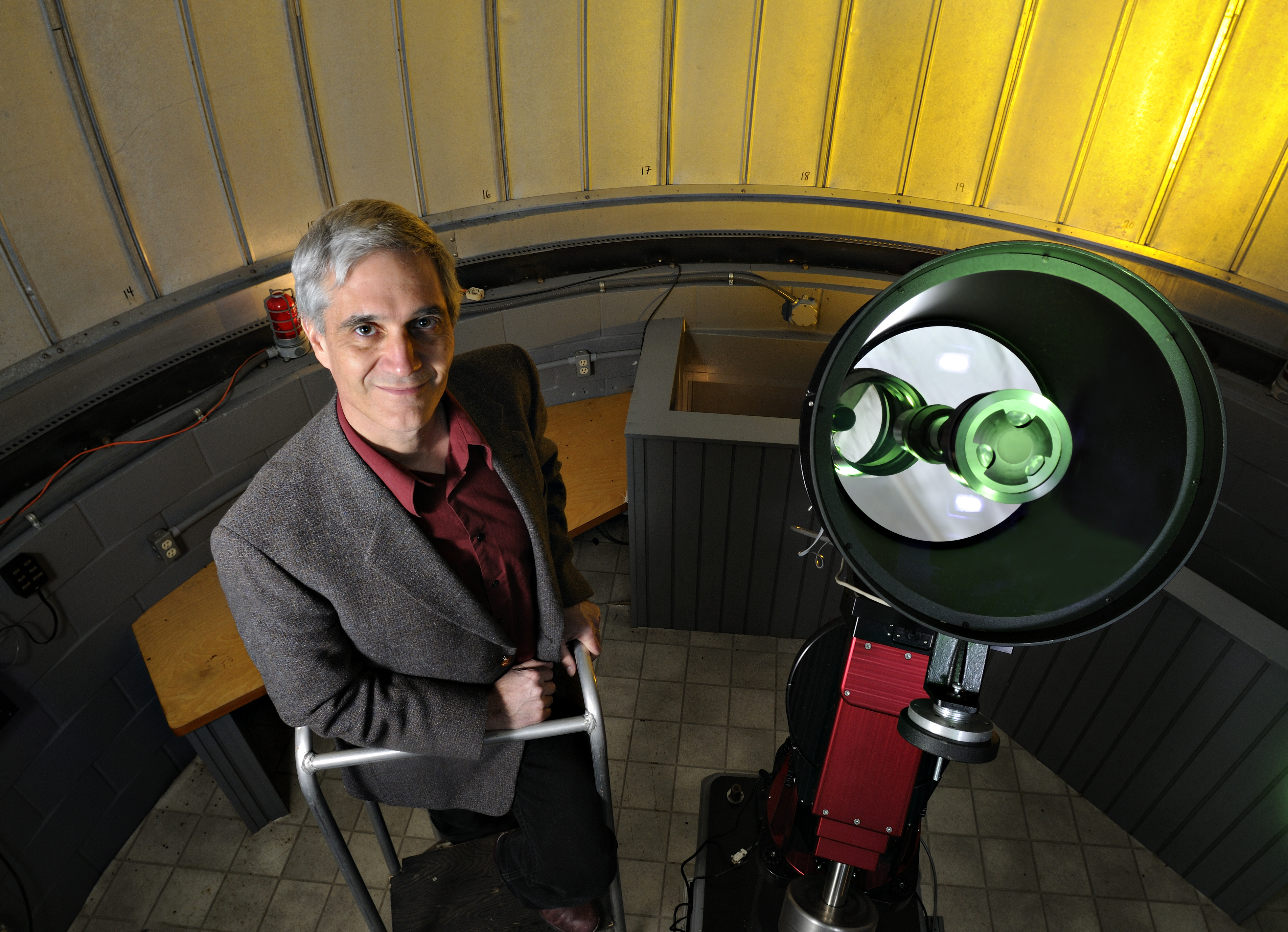First Year Experiences: Course makes long-term impressions on physics students

Taken on its own, the study of physics is already a fairly daunting task for new students arriving at Virginia Tech. To help make the transition easier, John Simonetti, associate chair of the Department of Physics and director of the Astronomy Outreach Program, leads a team that provides a different kind of first-year experience to new and aspiring physicists.
“Every First Year Experiences course has the three components of problem solving, integration, and inquiry,” Simonetti said. “We include those and we also collaborate with Student Services, Career Services, and the University Libraries. In the first semester we concentrate on problem solving.”
This concentration on problem solving makes a lot of sense for students in physics, which, according to Simonetti, represents the bread and butter of this science discipline.
“We try to get students to realize that solving problems in general is a creative process, often requiring that they think ‘outside the box’ and make calculations using partial information, educated guesses, and their own experience. The aim is to make them more flexible and confident in their work.”
During the second semester Simonetti uses a corps of faculty to provide talks during class sessions about their current research. Students are provided an opportunity to ask questions and start a conversation with speakers.
Jennie Paine of Fairfax, Va., a sophomore majoring in physics, said the First Year Experiences course helped teach her important problem solving skills.
“The best part of the course was having professors form the department come and speak about the research they do and how undergraduate students can get involved,” she said. “The course made me feel better prepared to go forward with my studies.”
“This is part of a process we use to prepare students to search out faculty members for undergraduate research projects,” Simonetti said. “After they listen to the talks, the librarian will come in and show them how to search for articles that will help bridge the gap between introductory physics and the topic they are interested in.”
By reading something between an introductory text and a frontier research article, students can then approach faculty members, request to work with them, and be able to talk about their topic of interest in a way that impresses upon the faculty member some of what they’ve learned.
“In this process, they are covering both inquiry and integration. We also ask Career Services to come to class so students can see what opportunities are waiting for them at the other end of their educational journey, and integrate these prospect with their undergraduate research considerations,” Simonetti said.
“The program gave me an opportunity to meet and introduce myself to faculty members I might not have met so soon otherwise,” Paine said. “Watching the presentations on their research gave me a better idea than I would have received under any other circumstances, of what kind of work I could do working as part of a research team.”
Students put together their plan for undergraduate research and when they have that experience they can start making better decisions about graduate school, or whether they want to choose a path such as medical or law school.
“We’ve been doing this for two years and most of the feedback is very good,” Simonetti said. “Some of the students tell us this is their favorite course because they hardly ever get a course dedicated to addressing their needs and questions about what they’re doing to do – how to handle the undergraduate years; what they’ll do later; how to get along with other members of the department. This program gives them a basis upon which to act and since we spend a lot of time on problem solving, it’s ideal for them academically as well.”




